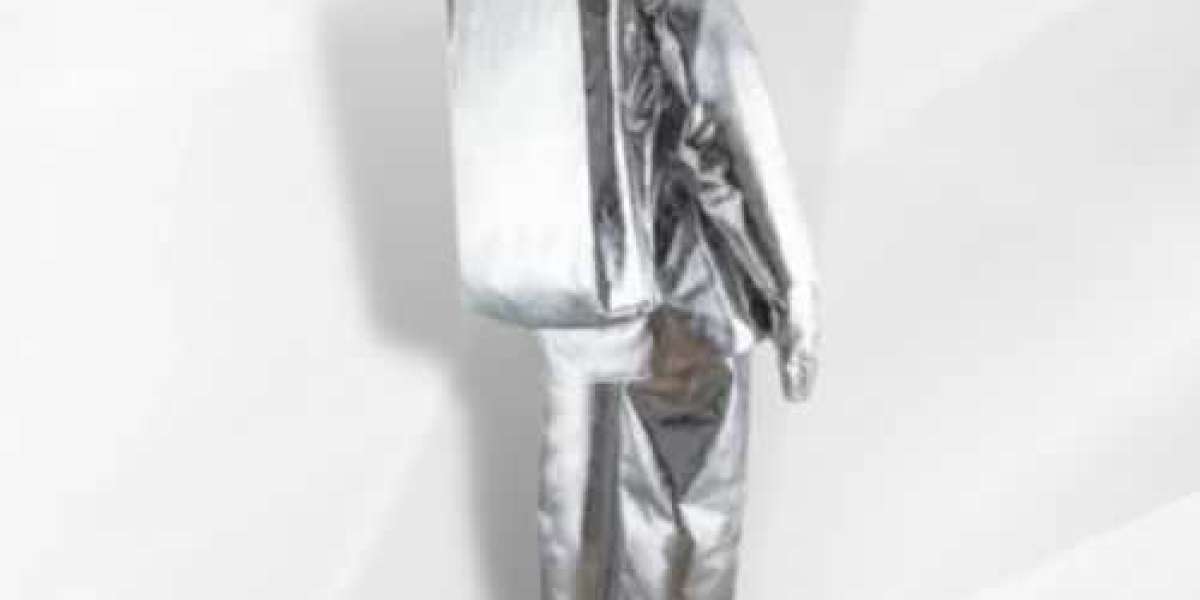In high-risk environments where extreme temperatures and fire hazards are prevalent, the safety of individuals working in such conditions becomes paramount. Among the array of protective gear designed for firefighters, industrial workers, and first responders, the aluminized fire proximity suit stands out as a vital shield against intense heat and flames. In this blog, we delve into the significance, construction, and functionality of aluminized fire proximity suits, shedding light on their indispensable role in safeguarding lives.
Understanding Aluminized Fire Proximity Suits:
Aluminized fire proximity suits are specially crafted to shield individuals from extreme heat, flames, and radiant heat exposure in hazardous environments such as industrial settings, firefighting scenarios, and proximity to molten metals. These suits are engineered with advanced materials and construction techniques to provide maximum protection while ensuring comfort and mobility for the wearer.
Key Components and Construction:
The construction of aluminized fire proximity suits involves several key components meticulously designed to offer comprehensive protection:
Outer Shell: The outer shell of the suit is typically made from aluminized fiberglass or aluminized Kevlar fabric, which reflects radiant heat away from the wearer and provides resistance against direct flame exposure.
Moisture Barrier: Beneath the outer shell, a moisture barrier serves as a protective layer against steam, water, and other liquids, ensuring that the wearer remains dry and comfortable during operations.
Thermal Barrier: The thermal barrier, often composed of multiple layers of insulating materials such as aramid or carbon felt, acts as a shield against heat transfer, effectively reducing the temperature experienced by the wearer.
Inner Lining: The inner lining of the suit is designed for comfort and moisture management, enabling the wearer to remain cool and dry even during prolonged use in high-temperature environments.
Functionality and Features:
Aluminized fire proximity suits are equipped with various features to enhance their functionality and usability:
Reflective Properties: The aluminized outer shell reflects radiant heat, preventing it from penetrating the suit and minimizing heat stress on the wearer.
Insulation: The thermal barrier and insulating layers provide insulation against high temperatures, ensuring that the wearer remains protected from heat-related injuries.
Mobility: Despite their protective layers, aluminized fire proximity suits are designed to allow for freedom of movement, enabling wearers to perform their duties efficiently without hindrance.
Durability: These suits are constructed to withstand rugged use and harsh environmental conditions, ensuring long-term durability and reliability.
Applications and Importance:
The importance of aluminized fire proximity suits cannot be overstated, especially in industries where workers are exposed to extreme heat and fire hazards. Some key applications include:
Firefighting: Aluminized fire proximity suits are essential gear for firefighters, enabling them to approach and extinguish fires safely in high-temperature environments.
Industrial Operations: Workers in industries such as steel manufacturing, foundries, and petrochemical plants rely on these suits to protect themselves from heat and molten metal splash hazards.
Emergency Response: First responders and emergency personnel wear aluminized fire proximity suits during rescue operations involving fires or hazardous materials, ensuring their safety while carrying out critical missions.
Conclusion:
Aluminized fire proximity suits represent a crucial line of defense against the hazards of extreme heat and flames in various industrial and emergency scenarios. Through their advanced construction, protective features, and ergonomic design, these suits play a vital role in safeguarding the lives of individuals working in high-risk environments. As technology continues to evolve, the development of innovative materials and designs will further enhance the effectiveness and comfort of aluminized fire proximity suits, ensuring the ongoing safety of those who rely on them in their line of duty.



